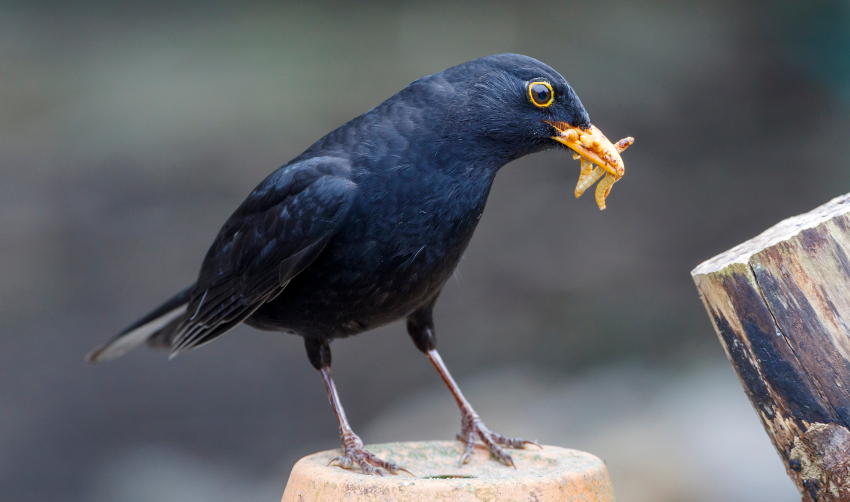
Live mealworms and live mini mealworms are a fantastic source of protein and – believe it or not – water for garden birds. Many resident garden bird species are declining in number in the UK, and the worst hit are those who rely on insects and invertebrates for food.
20 - 30 years ago farms and gardens tended to be more diverse and there were a lot more insects, invertebrates, bees, butterflies and birds than there are now.
Oftentimes, birds nesting in gardens will lay fewer eggs and fledge fewer young than those living in natural woodland sites, likely due to the lack of mature trees. The absence of this natural habitat means that birds are not provided with the insects needed to feed their young, resulting in the population reduction. However, you can help by providing some juicy mealworms for the birds to feast on!
Shop Mealworms for Wild Birds
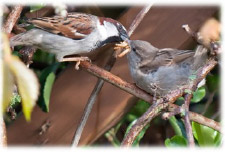
Guide to Feeding Live Mealworms to Wild Birds
For chicks to survive, they need to be fed by their parents and receive a source of water. Moisture can be delivered by way of unripe seeds, but live mealworms are a fantastic source of water for youngsters.
The two things most needed for rapid and healthy chick growth is a source of protein and a source of water. Live mealworms comprise about 50% protein and 50% water - so a perfect composition for garden birds!
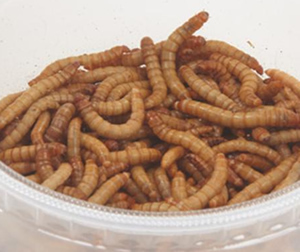
When Is the Best Time to Feed Mealworms to Birds?
You can feed live mealworms all year round, but the very best time to be offering them, is during the breeding season (April – July), particularly if the weather is cold as insects stay buried in warm places and don't venture out. During the breeding season, the activity rate of small birds can be 100 times greater than during the winter months, and their energy requirements are phenomenal. This is why it is so important to feed them easily digestible food at this time of year.
It has been proven that feeding live mealworms can have a significant positive effect on the number of live chicks reared by parents - so now is the time to give it a go!
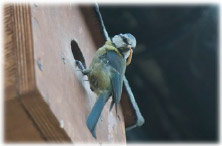
Feeding Live Mealworms to Birds FAQs:
Q. What birds eat live mealworms?
A. Well - the insect and invertebrate eaters! robins, sparrows, tits, starlings, blackbirds, wrens and even our thrushes will tuck in.
Q. What are live mealworms?
A. They are the larvae of the Flour Beetle (Tenebrio molitor to give it its posh name) a native British insect which eats flour, meal, grain and other related crops. They are vegetarian - which is important because when fresh, they don't smell!
Q. Where do your live mealworms come from?
A. Our live mealworms are grown in the UK for us and are BRITISH BRED! There are many companies importing mealworms from the Continent. Ours are UK grown and will be fresher. They won't have travelled from Europe.
Q. If I order some mealworms - what can I expect to receive?
A. Well live mealworms are delivered by Royal Mail. They will arrive in a cardboard box and within the box will be either some plastic tubs, or a white polypropylene bag with a cable tied top. Either option is available to try. The larger quantities come in white bags, but if you are new to feeding mealworms, plastic tubs can be really easy because you can just remove the lid and put them out on your bird table (or the ground). Please don't worry if the plastic tubs don't have air holes punched in them - the lids are made of breathable material so the mealworms will be fine!
Q. Do the mealworms smell?
A. No! There is no smell given off by mealworms if they are kept in the correct conditions. There will be some bran or some clean newspaper in with them when they arrive. For those that are in tubs - you need do nothing. If you have bought a larger sack of them, we would suggest transferring them into a shallow, smooth sided tray or tub.
Q. What do I feed them?
A. If you buy smaller amounts in tubs, they will come in bran, so there won't be any need to add anything. If you have larger amounts, you can top up the bran, or add some cereal, and they do love carrot - roughly chopped will be easy.
Q. How do I store live mealworms?
A. It isn't necessary to store mealworms in your fridge. The best place to store them is in a cool, dark, well ventilated dry place (ideally at a temperature of between 8-10 degrees C). If kept at this temperature they will survive for 2 - 3 weeks. If you buy larger amounts and decant them into your own containers, I would recommend that you store them so that they are at a maximal depth of 1" deep. Cat litter trays are quite good! If they are stored too deep - their waste material (poo!) will build up and their living environment will be less pleasant.
Q. How long will live mealworms last?
A. Being larvae - their longevity is dependent on the conditions and temperature they are stored at. If you keep them in the fridge - they eat less, move less and poo less - so they remain clean and will last longer. If you keep them in warm conditions - they do the reverse. If you find that there is a lot of black poo appearing - the chances are it is too warm for them or they are too deep in their container.
Q. If I order live mealworms today, when will I receive them?
A. All live foods are sent by First Class Royal Mail. They may therefore take 3-5 working days and will arrive separately from the rest of your order ( which should arrive with you on next working day delivery). Orders received before 10.00am on Monday-Thursday will be dispatched on the same day. Orders received on a Friday-Sunday will be dispatched on the following Monday. We are ultra careful around Bank Holidays ( especially during the summer months). We tend not to dispatch immediately before a Bank Holiday just in case they get held up in a warm sorting office somewhere - which will speed up their metamorphosis! So if you would like to order around a bank holiday, please order a few days earlier.
Q. I would like to receive a regular weekly order - can you do this?
A. Of course! we have many customers who request that we send out scheduled live mealworms to them- either on a weekly, fortnightly or monthly basis. Please just give us a call or email us with your request.
Q. What sort of feeder should I offer live mealworms in?
A. They need to be contained in a smooth steep sided container (otherwise you will find they wriggle up and out and will be gone in a flash!) Ideally, something with a roof/overhang to protect from the rain and drainage holes if you don't have a roof. Window feeders lend themseves to mealworms - and it is fab to get a really close up view of your robin and other small birds visiting. Caged feeders are also useful since they limit access to the bigger birds which can devour a whole pot of mealworms in an instant!
Live Mealworm Bird Feeders
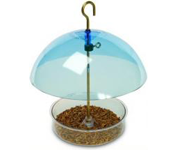

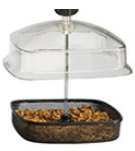

As mentioned above, the best way to feed live mealworms is in a smooth steep sided container - take a look at our range of bird feeding trays below!
Bird Feed Trays
Read More: Are Dried Mealworms Good for Birds?
 Seed Feeders
Seed Feeders Peanut Feeders
Peanut Feeders Peanut Butter Feeders
Peanut Butter Feeders Suet & Fat Feeders
Suet & Fat Feeders Window Feeders
Window Feeders Hanging Feeders
Hanging Feeders Feeding Stations
Feeding Stations Ground Feeders
Ground Feeders Easy Clean Feeders
Easy Clean Feeders Bird Tables
Bird Tables Seed Trays
Seed Trays Bird Baths & Drinkers
Bird Baths & Drinkers Feeder Accessories
Feeder Accessories Feeder Hygiene
Feeder Hygiene Squirrel Proof Bird Feeders
Squirrel Proof Bird Feeders For the Kids
For the Kids Niger Seed Feeders
Niger Seed Feeders Mealworm Feeders
Mealworm Feeders Bird Food Storage
Bird Food Storage Fat Ball Feeders
Fat Ball Feeders
